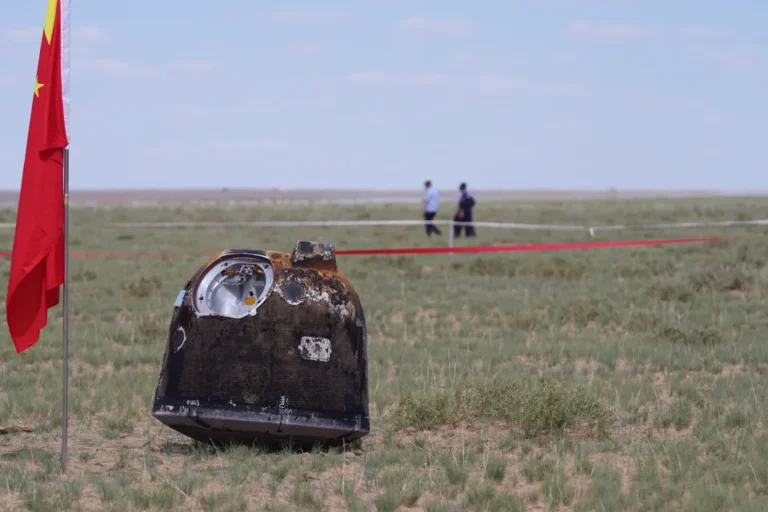The scientists will be able to better grasp the origin of our cosmic neighbor as a result of the data from the Chang’e 6 capsule.
It has been confirmed that the very first samples ever taken from the far side of the Moon have arrived on Earth. On Tuesday, the Chang’e 6 spacecraft from China successfully landed in Inner Mongolia. It was carrying rocks that might either validate or disprove the theories that scientists currently have concerning the creation of the Moon.
It is possible that the samples will assist scientists in confirming the existing concept regarding the origin of the Moon. This hypothesis states that the Moon was produced when molten Earth collided with a body around the size of Mars, ripping off material that took orbit next to us and creating the Moon.
Considering the geology of the Earth, if you were to simply land in North America, you would be missing out on a significant portion of the story, wouldn’t you agree? This is what Richard Carlson, who is the director emeritus of the Earth and Planets Laboratory at Carnegie Science, said to National Public Radio.
The researchers believe that the concept would be validated if the rock samples from China were found to be of the same age as the materials that were brought back by the Apollo program in the previous century. If this does not occur, it will throw a wrench into the works, which will need us to reevaluate our knowledge of how the Moon came into existence.
In an interview with National Public Radio, Jim Head, a planetary scientist at Brown University, stated that it is “pretty clear” that the near side and the far side of the moon have a great deal of dissimilarities. It’s a really important matter to consider. When a planet just has one hemisphere, it is impossible to comprehend how it came to be.
The Chang’e 6 spacecraft successfully landed on the far side of the Moon at the beginning of this month, making it only the second successful mission to the Moon’s far side, which is constantly facing away from Earth. The two are in a state of synchronized rotation, which ensures that one side is always concealed from our view. On account of this, landings are made more difficult because there is no direct line of communication between Earth and the other side. As a result, China’s space program is forced to rely on a satellite relay instead.
As a gesture of collaboration in the midst of otherwise stressful times between the two countries, China has offered to share some of the samples with scientists from the United States for scientific research. In order for researchers from the United States to submit proposals to investigate the historical samples, NASA has given them permission to do so.

